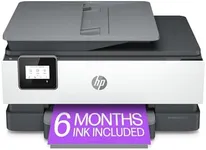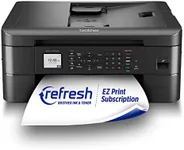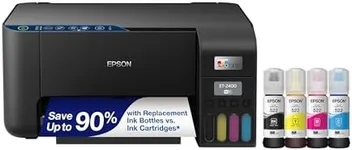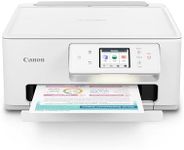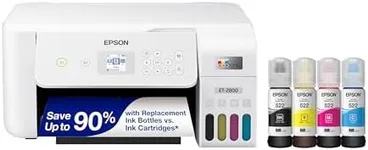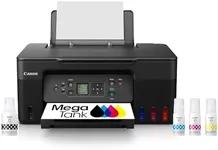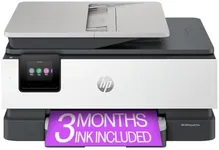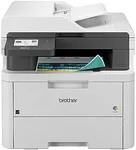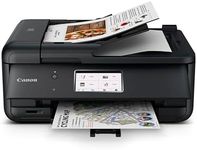Buying Guide for the Best Wireless Printer Scanners
Choosing the right wireless printer-scanner can significantly enhance your productivity and convenience, whether for home or office use. The key is to understand your specific needs and how different features and specifications can meet those needs. Here are some important factors to consider when selecting a wireless printer-scanner.Print Quality (Resolution)Print quality is measured in dots per inch (DPI). Higher DPI means better print quality, which is important for printing detailed images or professional documents. For general home use, a resolution of 600 DPI is usually sufficient. For high-quality photo printing or professional documents, look for a printer with at least 1200 DPI.
Print SpeedPrint speed is measured in pages per minute (PPM). This spec is crucial if you need to print large volumes of documents quickly. For occasional home use, a speed of 10-20 PPM is adequate. For office use or frequent printing, look for a printer with a speed of 20-40 PPM or higher.
Connectivity OptionsWireless printers can connect to your devices via Wi-Fi, Bluetooth, or NFC. Wi-Fi is the most common and allows multiple devices to connect to the printer. Bluetooth and NFC are useful for quick, direct connections from mobile devices. Ensure the printer supports the connectivity options that match your devices and usage habits.
Scanner ResolutionScanner resolution, like print quality, is measured in DPI. Higher DPI means better scan quality, which is important for scanning detailed images or documents. For general document scanning, 300 DPI is usually sufficient. For high-quality image scanning, look for a scanner with at least 600 DPI.
Duplex Printing and ScanningDuplex printing and scanning allow the printer to automatically print or scan both sides of a page. This feature is important for saving paper and time, especially if you frequently print or scan double-sided documents. If you need this convenience, ensure the printer supports automatic duplexing.
Paper HandlingConsider the types and sizes of paper the printer can handle. Some printers are limited to standard letter and legal sizes, while others can handle a variety of sizes and types, including envelopes and photo paper. If you need to print on different media, ensure the printer supports the necessary paper types and sizes.
Ink or Toner Cost and YieldThe cost and yield of ink or toner cartridges can significantly impact the long-term cost of owning a printer. Yield refers to the number of pages a cartridge can print before needing replacement. Look for printers with high-yield cartridges if you print frequently, as they can reduce the cost per page. Also, consider the availability and cost of replacement cartridges.
Mobile Printing CapabilitiesMobile printing capabilities allow you to print directly from your smartphone or tablet. Features like Apple AirPrint, Google Cloud Print, and manufacturer-specific apps can make mobile printing easy and convenient. If you often print from mobile devices, ensure the printer supports these features.
Size and DesignThe size and design of the printer can affect where you can place it and how it fits into your workspace. Compact models are ideal for small spaces, while larger models may offer more features but require more room. Consider the available space in your home or office and choose a printer that fits comfortably.
